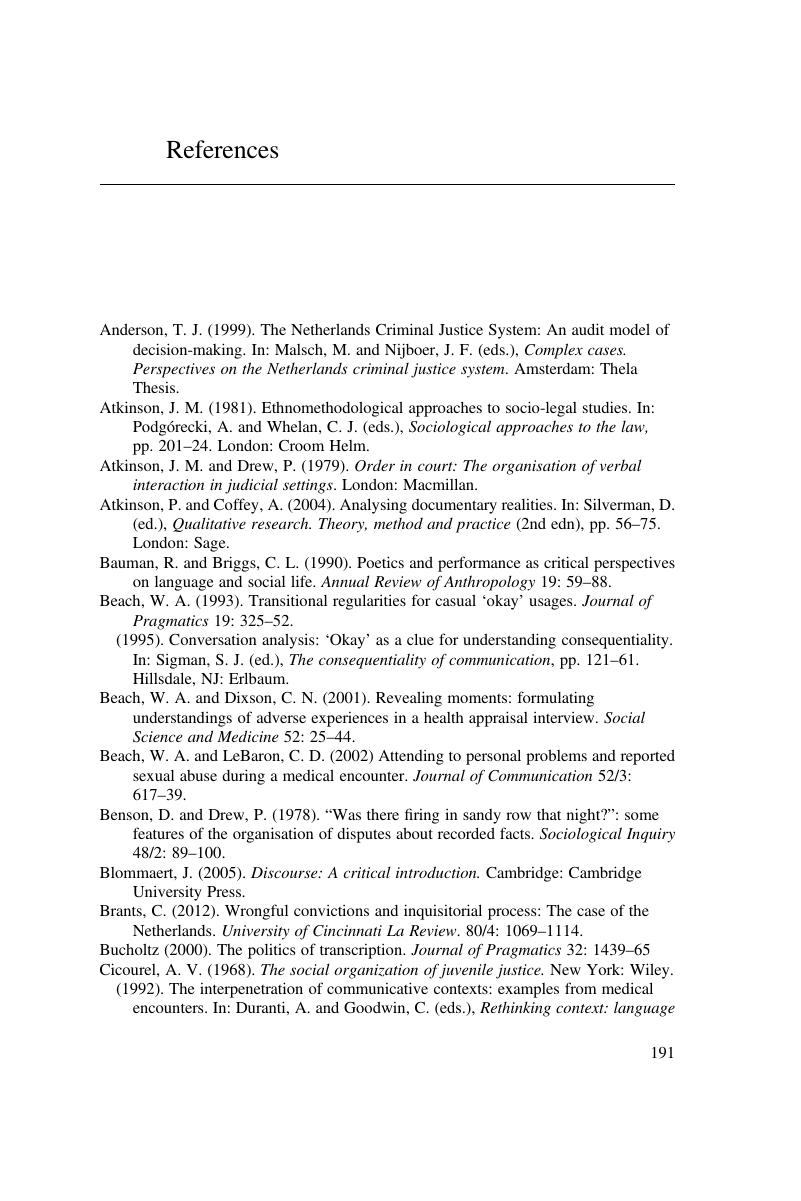Book contents
- The Suspect’s Statement
- Studies in Interactional Sociolinguistics
- The Suspect’s Statement
- Copyright page
- Contents
- Acknowledgements
- Transcription Conventions
- 1 Introduction
- 2 The Police Interrogation
- 3 The Police Report
- 4 The Trial
- 5 The Career of a Suspect’s Statement
- 6 Conclusion and Discussion
- Appendix A
- References
- Author Index
- Subject Index
- References
References
Published online by Cambridge University Press: 22 April 2019
- The Suspect’s Statement
- Studies in Interactional Sociolinguistics
- The Suspect’s Statement
- Copyright page
- Contents
- Acknowledgements
- Transcription Conventions
- 1 Introduction
- 2 The Police Interrogation
- 3 The Police Report
- 4 The Trial
- 5 The Career of a Suspect’s Statement
- 6 Conclusion and Discussion
- Appendix A
- References
- Author Index
- Subject Index
- References
Summary

- Type
- Chapter
- Information
- The Suspect's StatementTalk and Text in the Criminal Process, pp. 191 - 202Publisher: Cambridge University PressPrint publication year: 2019

